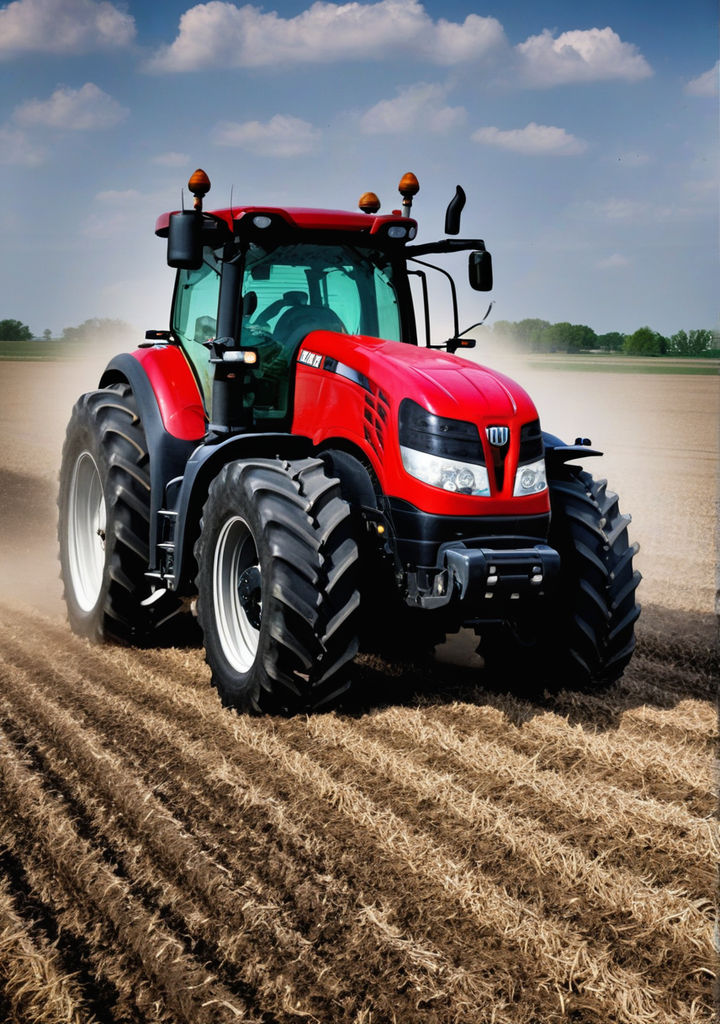
The Power Take-Off (PTO) system in Case IH Puma Series tractors plays a crucial role in powering implements and attachments. A well-functioning PTO is essential for efficient operation and productivity. However, PTO problems can arise, affecting the performance of your tractor. This guide explores common PTO issues in the Case IH Puma Series tractors, their symptoms, and effective solutions to address them.
1. Overview of the PTO System in Case IH Puma Series Tractors
The PTO system in Case IH Puma Series tractors transfers mechanical power from the tractor’s engine to various attachments, such as mowers, balers, and plows. The system includes the PTO shaft, clutch, and associated components, all of which work together to deliver power efficiently.
2. Common PTO Problems and Symptoms
2.1. PTO Not Engaging
Symptoms: The PTO shaft does not turn when the PTO is engaged, or the implement fails to operate.
Causes:
- Faulty PTO Clutch: The PTO clutch might be worn out or malfunctioning, preventing engagement.
- Hydraulic Issues: Low hydraulic fluid levels or a malfunctioning hydraulic system can affect PTO operation.
- Electrical Problems: Issues with the PTO switch or wiring can prevent engagement.
Solution:
- Inspect the PTO Clutch: Check for wear or damage. Replace the PTO clutch if necessary, following the specifications in the Case IH service manual.
- Check Hydraulic Fluid: Ensure the hydraulic fluid level is adequate and the system is functioning correctly.
- Examine Electrical Connections: Inspect the PTO switch and wiring for faults. Repair or replace any damaged components.
2.2. PTO Slipping
Symptoms: The PTO shaft turns intermittently or with reduced power, causing the implement to operate erratically.
Causes:
- Worn PTO Clutch Discs: Clutch discs may be worn or glazed, leading to slipping.
- Incorrect PTO Adjustment: Misalignment or incorrect adjustment of the PTO clutch can cause slipping.
- Debris or Contamination: Dirt or debris in the PTO system can interfere with proper engagement.
Solution:
- Replace Clutch Discs: If the clutch discs are worn, replace them as per the manufacturer’s specifications.
- Adjust the PTO Clutch: Ensure the PTO clutch is correctly adjusted. Refer to the Case IH service manual for proper adjustment procedures.
- Clean the PTO System: Remove any debris or contamination from the PTO system to ensure smooth operation.
2.3. Excessive Vibration or Noise
Symptoms: The PTO produces unusual vibrations or noises during operation, which can affect the implement and tractor performance.
Causes:
- Misaligned PTO Shaft: An improperly aligned PTO shaft can cause vibrations and noise.
- Damaged PTO Components: Worn or damaged components, such as bearings or universal joints, can create excessive noise.
- Imbalanced PTO Shaft: An imbalanced PTO shaft can lead to vibrations.
Solution:
- Check PTO Shaft Alignment: Ensure the PTO shaft is properly aligned. Adjust or realign as needed according to the Case IH service manual.
- Inspect Components: Examine PTO components for damage or wear. Replace any damaged parts to eliminate noise and vibrations.
- Balance the PTO Shaft: If the shaft is imbalanced, have it balanced professionally to reduce vibrations.
2.4. PTO Overheating
Symptoms: The PTO system or implement becomes excessively hot during operation, potentially leading to decreased performance or damage.
Causes:
- Overloading: Operating the PTO with a load that exceeds its capacity can cause overheating.
- Inadequate Cooling: Insufficient cooling of the PTO system can lead to overheating.
- Faulty PTO Bearings: Worn or damaged bearings can generate excess heat.
Solution:
- Avoid Overloading: Ensure the PTO is not overloaded by operating within the recommended capacity limits.
- Check Cooling System: Verify that the cooling system is functioning properly and providing adequate cooling for the PTO.
- Replace Faulty Bearings: Inspect and replace any faulty PTO bearings to prevent overheating.
3. Preventative Maintenance Tips
3.1. Regular Inspections
- Perform Routine Checks: Regularly inspect the PTO system, including the clutch, shaft, and hydraulic components, for signs of wear or damage.
3.2. Keep the System Clean
- Remove Debris: Keep the PTO area clean and free of debris to ensure smooth operation.
3.3. Follow Maintenance Schedule
- Adhere to the Service Manual: Follow the maintenance schedule outlined in the Case IH service manual for your Puma Series tractor to ensure proper care of the PTO system.
3.4. Monitor Operating Conditions
- Avoid Overloading: Operate the PTO within its designed capacity to prevent stress and potential issues.
4. Conclusion
The PTO system in your Case IH Puma Series tractor is essential for powering implements and achieving optimal performance. By understanding common PTO problems, recognizing symptoms, and applying effective solutions, you can maintain the efficiency and reliability of your tractor’s PTO system. Regular maintenance and timely repairs will help avoid costly downtime and ensure your tractor continues to perform at its best.
FAQs
Q1: How often should I check the PTO system on my Case IH Puma Series tractor?
- A: It’s advisable to check the PTO system during regular maintenance intervals. Inspect the system for wear, leaks, or damage, and address any issues promptly.
Q2: What type of PTO maintenance is required?
- A: PTO maintenance includes checking and adjusting the PTO clutch, inspecting and cleaning components, and ensuring proper alignment and lubrication.
Q3: Can I perform PTO repairs myself, or should I seek professional help?
- A: Simple maintenance tasks can be performed by yourself, but for complex repairs or adjustments, it’s best to consult a professional mechanic or refer to the Case IH service manual for guidance.

